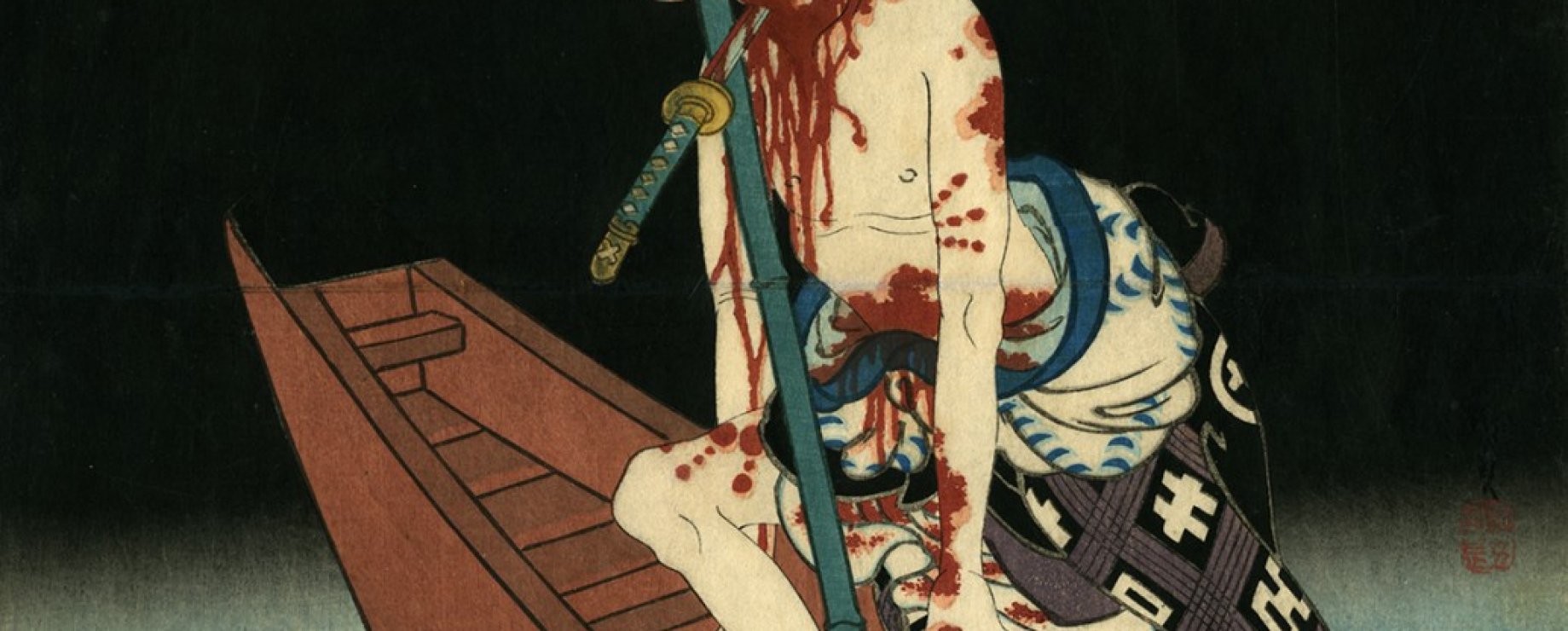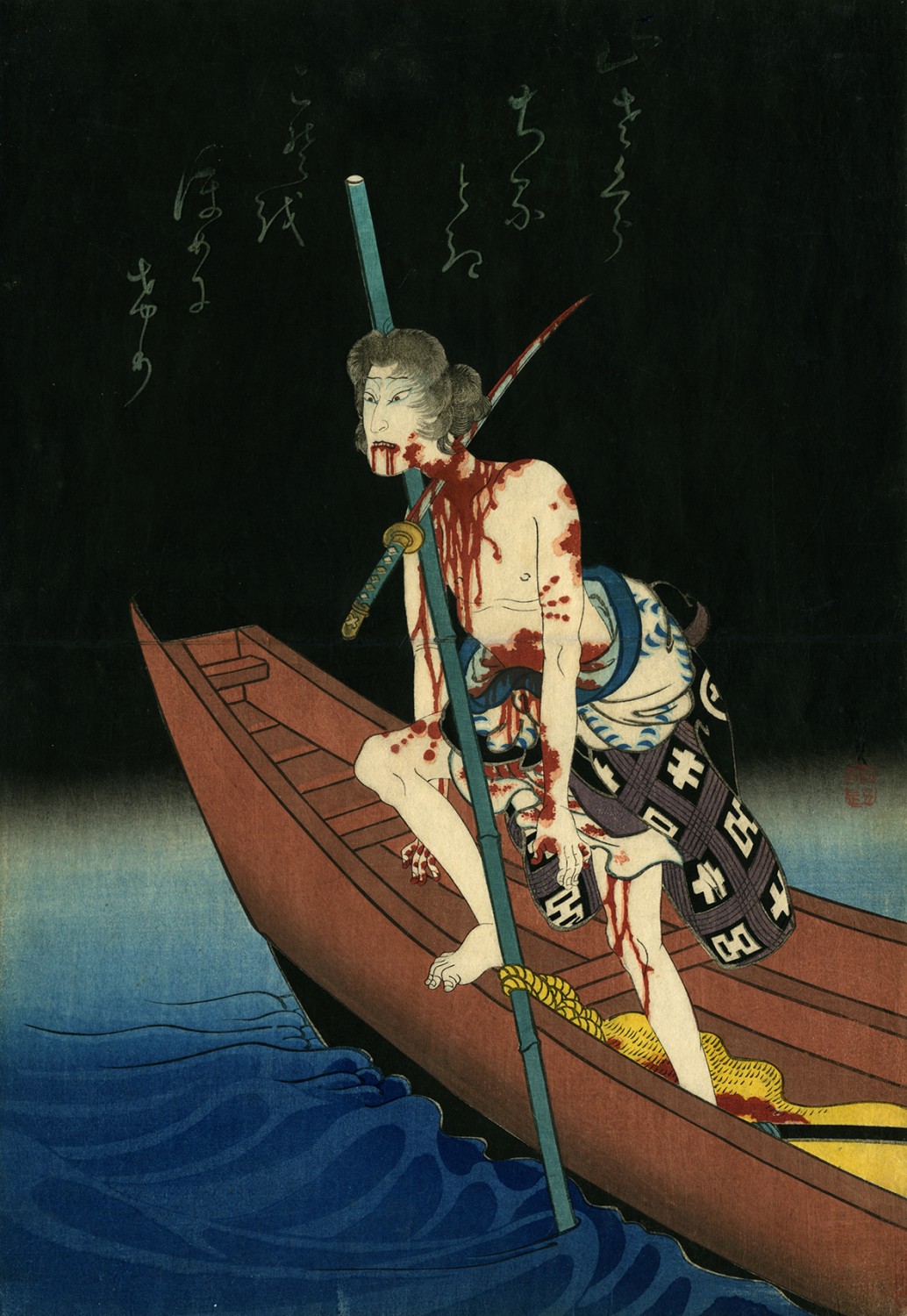

Woodblock print, design by Hirosada (active ca 1823-64), ōban (37.9 x 25.2 cm), published in Osaka by Kinkadō Konishi in about 1849.
This woodblock print, designed by the Osaka printmaker Hirosada, shows the kabuki actor Onoe Kikugorō III as the notorious robber Shirai Gonpachi committing suicide. The poem inscribed with silver syllables in the background of this sinister scene reads: “The blossoms of the wild cherry are their own poets as they fall” (translation by Eiko Kondo, 1937-2000).
At age 16, Shirai Gonpachi, was engaged in a quarrel, and killed a fellow samurai. Thereafter, he was wanted by the police, and turned to murder and theft after falling in love with a courtesan. In 1679 Gonpachi was arrested and executed, only 24 years old. His life was romanticized and became an inspiration for many kabuki plays.
In this scene, which probably comes from a successful play titled ’53 stations of the plum-tree journey’, the police is closing in on Gonpachi at the Rokugo river. When he realized that ‘the game was over’, he committed suicide by piercing his throat.
Onoe Kikugorō III (1784-1849)* was a skilled actor praised for his interpretation of villain roles. When he retired from the stage in 1847, he started a shop selling rice cakes. But, within a few months, he became bored. He re-entered the stage and travelled to the Kamigata (Nagoya-Osaka-Kyoto region) where he played the role of Gonpachi in several theatres. In the beginning of 1849, he fell ill and decided to return to Edo along the Tōkaidō Highway. Halfway the journey he died at Kakegawa; 66 years old.
It is possible that Hirosada designed this print shortly after the death of Kikugorō as a memorial print (shini-e) depicting him in one of his successful roles as the tragic hero Shirai Gonpachi.
*The actor's robe is patterned with the syllables キ- ki and 呂- rō, enclosed by five - go and four (5 + 4 = 9) = ku crossing lines, forming together the actor's stagename Kikugorō.
Want to continue reading?
Become a member
Individual or institute*
2 x Andon per year
Access to the online Andon Collection
Access to SJA activities and news
Access to a world wide network
*€85 outside the Netherlands€75 / €85 per year
Partner membership*
Access to the online Andon Collection
Access to SJA activities and news
Access to a world wide network
* It is required that the partner lives at the same address.€25 per year
Student membership*
2 x Andon per year
Access to the online Andon Collection
Access to SJA activities and news
Access to a world wide network
* A scan of a recent student ID is required.€40 per year
Already a member?
Login








